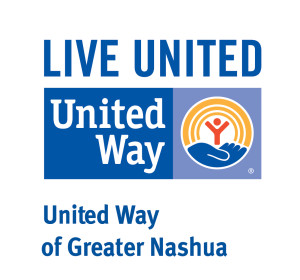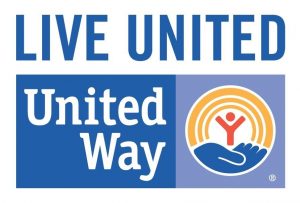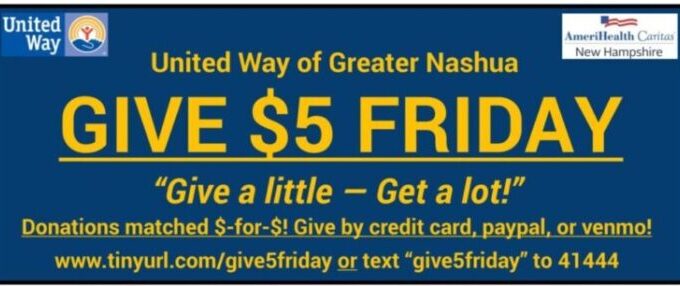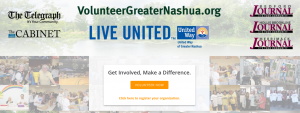
Social Isolation – A killer island in our midst?
By Mike Apfelberg and Meghan Brady
We are grateful to the Nashua Telegraph for giving us this space each month to discuss some of our community’s tougher social issues. This aligns perfectly with United Way’s mission of fighting for the health, education, and economic mobility of every person in our community. This month, we have partnered with Meghan Brady from St. Joseph Community Services, which administers the Meals on Wheels program in Greater Nashua. Meghan and I will be addressing the topic of social isolation.
The word itself, isolation, derives from its Latin roots meaning “made into an island.” Such an apt description! Is there any place lonelier than an island? One of the great ironies of our times is that in spite of technologies such as Facebook and other social media, we are more disconnected from one another than ever before. According to research published in Psychology Today, more than 25% of Americans have no meaningful social support, and that number has jumped from 1985 when 10% of Americans reported being completely alone. This can be combined with research indicating that as much as 40% of a person’s health outcomes are due to social factors. People who experience extreme isolation are subject to decreased levels of happiness, greater likelihood of chronic illness such as heart disease, cancer, and diabetes, longer recovery times from injury, depression, and shorter life spans. Remarkable, Alzheimer’s disease is twice as likely to occur in lonely people as in people who are socially connected!
When many of us hear about programs like Meals on Wheels, we think first of food and nutrition. How good it is for somebody who is homebound to receive a warm healthy meal. And, of course, the food IS important. What we fail to acknowledge, and the primary reason why United Way invests in these programs, is that the effects of isolation can be utterly devastating, well beyond the effect of any meal. Based on data from our community, in 2015 22% of all individuals enrolled in Meals on Wheels reported that in any specific week their driver is the ONLY person they actually see. This number has almost doubled since 2013 and comes from a total of about 1,400 people in our community. So this means that in our midst there are over 300 Meals on Wheels clients who do not see ANYONE besides their driver in any given week. Of course, while these numbers are startling, they are only the tip of the iceberg when it comes to isolation if you consider that not all individuals in need of service are connected to Meals on Wheels or another similar program.
Who are these people… these islands in our community? Think about a person named Fred who lives in Amherst. Fred is 60 years old, was an engineer and developed multiple sclerosis in the mid ‘80’s. Fred’s wife passed away about a decade ago and his only family, his son, lives in Colorado. Fred is alone. What does Fred say about Meals on Wheels? “I have a meal every day. I see the people, who deliver my lunch each day. This perks me up for the day ahead.” Fred’s story is like hundreds of others. Ordinary people, who have lived ordinary lives and are now disconnected, hidden and lonely in our community.
So you might be asking, “What if these people didn’t receive services? What would happen to them?” The answers could include that they would need to leave their homes for a nursing home. The average cost of a Meals on Wheels enrollee is $3,000 per year… the typical nursing home costs around $100,000 per year. Delivering these services to homebound individuals creates social connectedness that otherwise wouldn’t exist, but clearly also has a very strong return on investment, saving the costs of care which would be there if the service were not in place. Ponder also the actual costs in medical care when research shows that longevity increases by 22% among people over 70 who report a large circle of friends and that blood pressure is on average 16 points higher in lonely people over age 65.
How can you help? At United Way we like to say that you can always GIVE, ADVOCATE, and VOLUNTEER. If you have the financial resources to give just a dollar or two each week to the United Way Community Impact Fund, you can make an enormous difference in that your contribution will be combined with that of many others to support the many programs in our community which work at alleviating isolation. Advocacy is easy… this is an election year and our representatives always want to hear from their constituents. Ask them about the issue of social isolation and if they have considered supporting programs and solutions to confront this problem. Perhaps they have a great answer, or perhaps you have helped them to consider an issue they haven’t given much thought to. You might also want to learn more about the effects of social isolation by visiting the websites of Greater Nashua Mental Health or NAMI. Lastly, you can volunteer. I’ve experienced first hand the magic of a driver for Meals on Wheels visiting a client and spreading some good cheer. Organizations like this operate on a shoestring budget and are highly dependent on volunteers for the services they provide. Another great United Way organization doing similar work in our region is The Caregivers. These might be some of the most fulfilling volunteering opportunities you could ever contemplate doing.
Please try to remember that there are many “Fred’s” in our community and that all it takes is a little bit of effort to reach out and touch them, the effect of which could be to help get them off the island and back into the healthy mainland of Greater Nashua.
Mike Apfelberg is President, United Way of Greater Nashua
Meghan Brady is President, St. Joseph Community Services Meals on Wheels

















